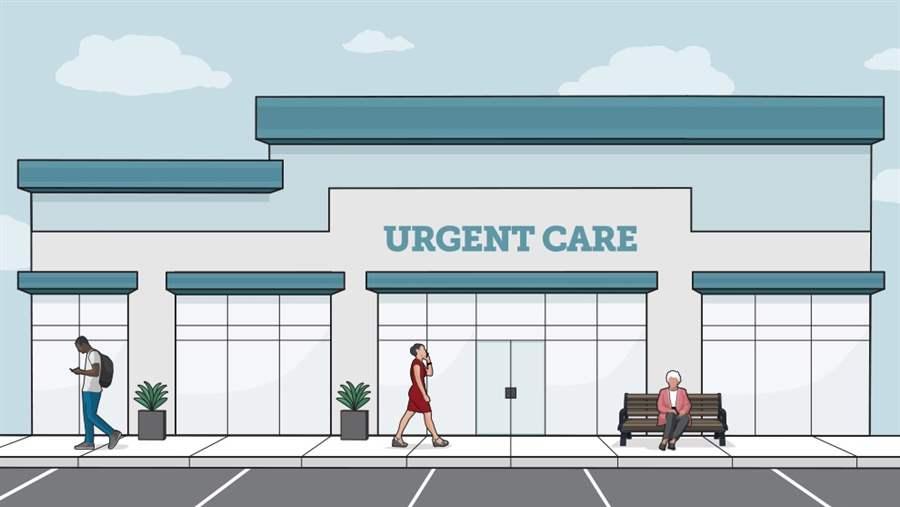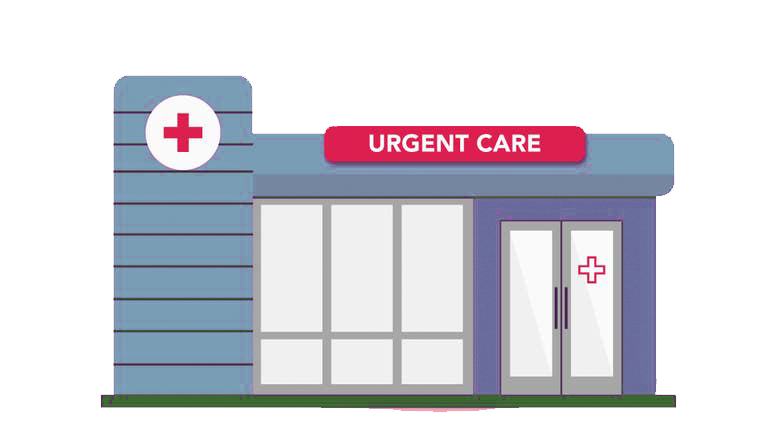Urgent Care vs. Medical care: Which Is Right for Your Requirements?
Urgent Care vs. Medical care: Which Is Right for Your Requirements?
Blog Article
Recognizing the Significance of Urgent Care Providers for Non-Life-Threatening Medical Issues
The significance of urgent treatment services for non-life-threatening medical concerns can not be overstated, particularly in today's healthcare landscape. By recognizing the benefits of urgent care, such as decreased wait times and price performance, one can much better value their role in individual health management.
What Is Urgent Care?
Urgent care describes a classification of medical services designed to deal with non-life-threatening conditions that call for immediate attention however do not warrant a check out to the emergency area. These centers provide a bridge in between primary treatment and emergency situation solutions, providing obtainable medical care choices for individuals experiencing acute medical concerns, such as small fractures, sprains, infections, or extreme illnesses that emerge suddenly.

The range of services offered by immediate care centers can vary but generally includes treatment for usual disorders like colds, flu, and allergies, as well as small injuries (urgent care). In addition, numerous immediate care centers offer preventative services, such as vaccinations and physical examinations, to deal with wider health and wellness requirements. By providing a practical alternative for urgent medical issues, these centers play a vital duty in the health care continuum, making certain that clients get proper care when they need it most
Benefits of Urgent Treatment Services
Many people locate that utilizing immediate treatment services offers substantial benefits over standard emergency area brows through or waiting for a key care appointment. One main benefit is the lowered delay times. Urgent care centers generally have much shorter wait periods, permitting individuals to obtain prompt clinical focus when they need it most. This expedited care is particularly practical for non-life-threatening conditions that require timely intervention.
Another advantage is the prolonged hours of procedure. Lots of urgent treatment centers are open nights and weekend breaks, suiting individuals that might not have the ability to see their health care doctor throughout normal office hours. This adaptability makes it easier for patients to accessibility care at their comfort.
Furthermore, urgent treatment services typically supply an economical option to emergency clinic. Individuals regularly face lower co-pays and total costs when looking for treatment for minor conditions at urgent treatment facilities as opposed to medical facility emergency departments.
Lastly, urgent care facilities are geared up to deal with a selection of non-life-threatening issues, giving a wide series of solutions under one roofing system. This extensive approach not just enhances the therapy procedure but likewise boosts person fulfillment by providing timely and reliable treatment.
Usual Problems Dealt With
What sorts of non-life-threatening problems can patients anticipate to receive therapy for at immediate treatment facilities? Urgent care centers are equipped to manage a broad variety of typical clinical concerns that call for punctual interest but do not pose an instant hazard to life. These facilities typically deal with conditions such as minor fractures, sprains, and stress, offering necessary care for injuries that take place during daily tasks or sports.
Furthermore, clients often seek therapy for respiratory infections, consisting of colds, flu, and respiratory disease, where timely treatment can alleviate signs and avoid complications. Skin disease such as breakouts, insect attacks, and small burns are additionally frequently addressed, as prompt care can minimize discomfort and decrease the threat of infection.

Comparing Urgent Care and Emergency Clinic

One substantial distinction lies in wait times; urgent treatment centers normally have much shorter delay times contrasted to emergency areas, which can be congested with even more crucial instances. This efficiency enables individuals to obtain timely treatment for their ailments.
From an economic perspective, immediate care visits have a tendency to be more economical than emergency situation area brows through. Insurance copays and out-of-pocket costs are often reduced at immediate care facilities, making them a much more economical option for non-emergency scenarios.
How to Select an Urgent Treatment Facility
Choosing the right urgent treatment facility can considerably boost the high quality of treatment received throughout a non-life-threatening clinical problem. When choosing an urgent treatment center, several vital variables must be considered.
First, analyze the center's certification and licensing. Seek facilities that are certified by acknowledged companies, as this suggests adherence to quality requirements. Next, assess the variety of services supplied. Some immediate care facilities specialize in particular locations, while others offer thorough treatment for various medical concerns.
In addition, take into consideration the location and hours of operation. An easily located facility with prolonged hours can be important for prompt care. It's likewise a good idea to inspect the center's wait times and client evaluations, which can supply insights into the overall individual experience.
Verdict
To conclude, urgent care services play an essential duty in resolving non-life-threatening clinical issues successfully. By using immediate interest for various problems, view it these centers improve client access to prompt treatment while minimizing the pressure on emergency rooms. The benefits of urgent treatment, including prolonged hours and lower prices, make them a beneficial choice for individuals seeking prompt therapy. Inevitably, comprehending the value of immediate care facilities adds to enhanced medical care monitoring and person fulfillment.
Numerous people discover that making use of urgent treatment solutions offers considerable advantages over typical emergency space check outs or waiting for a primary treatment visit. Many immediate treatment centers are open nights and weekend breaks, suiting individuals who may not be able to see their main treatment medical professional throughout routine office hours. Immediate care facilities are developed to deal with non-life-threatening problems, such as small fractures, infections, and diseases, using a hassle-free option to emergency situation rooms for those in need of prompt treatment. Some urgent treatment centers specialize in particular areas, while others supply comprehensive treatment for different clinical problems.
Report this page